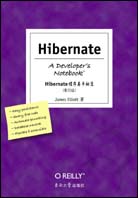
Hibernate:程序高手秘笈(影印版)
出版时间:2005年11月
页数:192
你是否喜爱编写软件程序但却讨厌数据库编码?《Hibernate程序高手秘笈》正是你所需要的。数据库专家或许喜欢摆弄SQL,但你不必,应用程序的其余部分才是真正有趣的部分。甚至数据库专家也担心把SQL放入Java程序中的复杂性和困难性。《Hibernate程序高手秘笈》展示了如何用Hibernate来自动化配置:写一些Java对象和简单的配置文件,Hibernate将使这些对象和数据库间的所有交互自动化。你甚至不必知道数据库在哪,通过更改一个配置文件中的几个语句,就能简单地从一个数据库切换到另一个数据库。
《Hibernate程序高手秘笈》带你遍历Hibernate的使用,从安装和配置到复杂的关联和复合类型。书中有两章探究如何实现复杂的查询:通过一个纯Java API,或者用一个SQL激发的但是面向对象的查询语言来表达。使用Hibernate的最大惊喜之一是:对于许多常见的真实世界的应用场景,根本不需要一个精确的查询,但别因为这给你带来困惑。如果你已意图给自己的应用程序加个数据库,不要拖延,这比过去的更有趣,《Hibernate程序高手秘笈》会告诉你为什么。
我坐在飞机里读完了《Hibernate程序高手秘笈》。很难找到一本关于一个新的Java技术的书能在一次国内飞行中看完。这本高效、简洁地处理对象关系映射的笔记做到了。而且,Hibernate给人的印象更加深刻。许多这类书需放在托运行李中。你坐头等舱旅行时,随身带着这本书吧。 ——Mike Clark
一个简单统一的结构值得用一本简单的书介绍,这本书做到了。书中的例子生动易懂,但是,足够复杂,可在一个真实世界的环境中演示Hibernate。我是该书的一个新书迷。
——Bruce Tate
本书荣获2005年第十五届Jolt技术类图书效能大奖。
《Hibernate程序高手秘笈》带你遍历Hibernate的使用,从安装和配置到复杂的关联和复合类型。书中有两章探究如何实现复杂的查询:通过一个纯Java API,或者用一个SQL激发的但是面向对象的查询语言来表达。使用Hibernate的最大惊喜之一是:对于许多常见的真实世界的应用场景,根本不需要一个精确的查询,但别因为这给你带来困惑。如果你已意图给自己的应用程序加个数据库,不要拖延,这比过去的更有趣,《Hibernate程序高手秘笈》会告诉你为什么。
我坐在飞机里读完了《Hibernate程序高手秘笈》。很难找到一本关于一个新的Java技术的书能在一次国内飞行中看完。这本高效、简洁地处理对象关系映射的笔记做到了。而且,Hibernate给人的印象更加深刻。许多这类书需放在托运行李中。你坐头等舱旅行时,随身带着这本书吧。 ——Mike Clark
一个简单统一的结构值得用一本简单的书介绍,这本书做到了。书中的例子生动易懂,但是,足够复杂,可在一个真实世界的环境中演示Hibernate。我是该书的一个新书迷。
——Bruce Tate
本书荣获2005年第十五届Jolt技术类图书效能大奖。
- Preface
- Chapter 1. Installation and Setup
- Getting an Ant Distribution
- Getting the HSQLDB Database Engine
- Getting Hibernate
- Setting Up a Project Hierarchy
- Chapter 2. Introduction to Mapping
- Writing a Mapping Document
- Generating Some Class
- Cooking Up a Schema
- Connecting Hibernate to MySQL
- Chapter 3. Harnessing Hibernate
- Creating Persistent Objects
- Finding Persistent Objects
- Better Ways to Build Queries
- Chapter 4. Collections and Associations
- Mapping Collections
- Persisting Collections
- Retrieving Collections
- Using Bidirectional Associations
- Working with Simple Collections
- Chapter 5. Richer Associations
- Using Lazy Associations
- Ordered Collections
- Augmenting Associations in Collections
- Lifecycle Associations
- Reflexive Associations
- Chapter 6. Persistent Enumerated Types
- Defining a Persistent Enumerated Type
- Working with Persistent Enumerations
- Chapter 7. Custom Value Types
- Defining a User Type
- Using a Custom Type Mapping
- Building a Composite User Type
- Chapter 8. Criteria Queries
- Using Simple Criteria
- Compounding Criteria
- Applying Criteria to Associations
- Querying by Example
- Chapter 9. A Look at HQL
- Writing HQL Queries
- Selecting Properties and Pieces
- Sorting
- Working with Aggregate Values
- Writing Native SQL Queries
- Appendix A. Hibernate Types
- Appendix B. Standard Criteria
- Appendix C. Hibernate SQL Dialects
- Index
书名:Hibernate:程序高手秘笈(影印版)
作者:James Elliott 著
国内出版社:东南大学出版社
出版时间:2005年11月
页数:192
书号:7-5641-0166-0
原版书出版商:O'Reilly Media
The Developer's Notebook series is modeled on the tradition of
labora-tory notebooks. Laboratory notebooks are an invaluable tool for
researchers and their successors.
The purpose of a laboratory notebook is to facilitate the recording of
data and conclusions as the work is being conducted, creating a faithful
and immediate history. The notebook begins with a title page that
includes the owner's name and the subject of research. The pages of the
notebook should be numbered and prefaced with a table of
contents. Entries must be clear, easy to read, and accurately dated;
they should use simple, direct language to indicate the name of the
experiment and the steps taken. Calculations are written out carefully
and relevant thoughts and ideas recorded. Each experiment is intro-duced
and summarized as it is added to the notebook. The goal is to
produce comprehensive, clearly organized notes that can be used as a
reference. Careful documentation creates a valuable record and provides
a practical guide for future developers.
labora-tory notebooks. Laboratory notebooks are an invaluable tool for
researchers and their successors.
The purpose of a laboratory notebook is to facilitate the recording of
data and conclusions as the work is being conducted, creating a faithful
and immediate history. The notebook begins with a title page that
includes the owner's name and the subject of research. The pages of the
notebook should be numbered and prefaced with a table of
contents. Entries must be clear, easy to read, and accurately dated;
they should use simple, direct language to indicate the name of the
experiment and the steps taken. Calculations are written out carefully
and relevant thoughts and ideas recorded. Each experiment is intro-duced
and summarized as it is added to the notebook. The goal is to
produce comprehensive, clearly organized notes that can be used as a
reference. Careful documentation creates a valuable record and provides
a practical guide for future developers.
购买选项